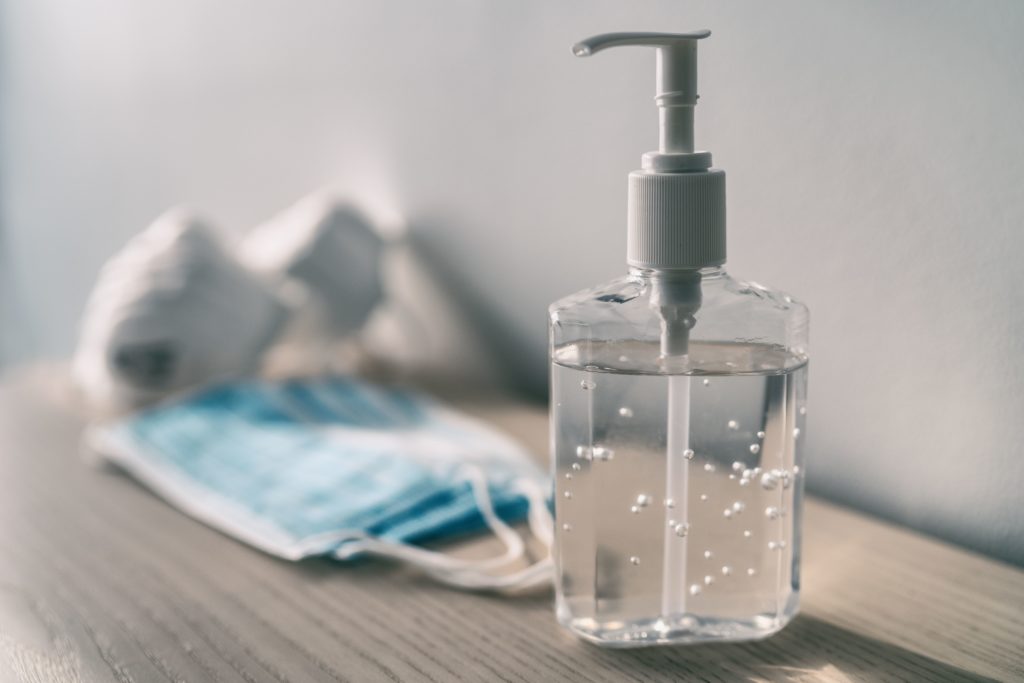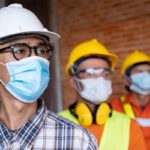Sector - Health & Safety
Construction Sites Need to Keep Customers and Staff Safe

Almost a year after the first case was detected in Wuhan, COVID-19 continues to have a far-reaching impact on the construction industry. Health and safety measures need to be strictly enforced to ensure the safety of all staff from COVID-19, especially as the Government’s strategy encourages workers to travel on-site if they cannot work from home.
Here, Tautvydas Karitonas, Head of Research and Development for infection control experts Inivos, outlines what construction sites need to do to keep their customers and staff safe.
“Controlling the spread of the virus has been a challenge for this sector, as staff are expected to travel to work on site if they cannot work from home. There are, however, ways for site managers and company leaders to ensure the safety of their staff from COVID-19 and help keep construction sites virus-free.
Manual cleaning alone is not effective at keeping staff safe
“Effective decontamination is crucial to limiting spread within a construction site. COVID-19 is highly contagious and can quickly spread throughout a site in a short matter of time.
“Research has suggested that anywhere between 25% and 80%[1] of cases are asymptomatic, meaning that infected individuals can unknowingly spread the virus. The delay between contracting the virus and the onset of symptoms can also take up to fourteen days.
“The risk of infection spreading is also heightened because SARS-CoV-2 (the viral pathogen which causes COVID-19) is an airborne virus, which means that respiratory droplets can linger in the air for prolonged periods of time.
“Although manual cleaning is a vital step in the process, it is simply not enough on its own. More robust measures need to be implemented to minimise the risk of viral contamination.
“Unlike manual cleaning, which can lead to pathogenic micro-organisms being left behind by unavoidable human error, technology has the power to thoroughly decontaminate a space. Hospitals, care homes and other organisations including oil rigs have begun using innovations such as hydrogen peroxide vapour (HPV), which reduces micro-organisms by >log6 and ultraviolet light (UV-C), which reduces micro-organisms by >log5, to eradicate COVID-19.[2]”
How UV-C and HPV can decontaminate construction sites
“HPV or UV-C technology can also be used to thoroughly decontaminate construction sites by dispersing hydrogen peroxide vapour or ultraviolet light throughout the site, ensuring all areas are rapidly cleaned and any viral particles are eradicated.
“HPV and UV-C technology works by breaking down the outer layer of fat on a viral organism and then destroying the genetic material within, reducing the pathogen by 99.9999%.
“These two technologies can be used across construction sites to destroy harmful pathogens. Their ability to thoroughly decontaminate their surroundings in a matter of minutes (UV-C can take as little as 25), means that important work is not put on hold for long periods of time as decontamination takes place.”
Sufficient PPE is essential
“During the first wave of the pandemic, many industries, including the healthcare sector, struggled to source sufficient levels of personal protective equipment (PPE). To ensure construction staff can continue to work during the pandemic, it is vital that construction managers plan ahead to ensure their workers have enough PPE to work safely. Construction workers are well versed to the importance of wearing PPE – however, up until now, this has meant steel toe capped boots, hard hats, protective goggles, and high-vis vests. Now, the PPE that they will need to wear has an entire new purpose. Construction site managers and staff will need to ensure they have a sufficient stock of face masks, face coverings, and potentially gloves.
“Construction workers usually work in groups, and as COVID-19 is so highly contagious, it is important that new, single-use PPE is worn every day to limit the risk of transmission. If this is not possible due to dwindling PPE stock levels, construction staff should have a contingency plan which ensures any personal protective equipment is thoroughly decontaminated to avoid the virus being passed between workers or customers.
“We know that hydrogen peroxide vapour can effectively decontaminate PPE without damaging its integrity. This includes micro-organisms significantly more resistant than COVID-19.
“A recent trial by University Hospital Southampton has validated the efficacy of ProXcide to decontaminate gown PPE without affecting garment integrity. Researchers found the process using HPV technology could be used to safely process sterile gowns for healthcare workers.
“Although new single-use PPE will remain best practice, construction sites should consider putting a contingency plan in place to regularly decontaminate PPE, should they need to. This will reassure staff that they are properly protected – even if PPE stock is compromised.”
The Importance of Assessing the Workplace
“The functional areas of a construction site are not the only places that a workforce risk exposure to COVID-19. Doorways and communal facilities such as bathrooms and kitchens all offer opportunities for the virus to spread. It is essential that construction site managers take adequate steps to mitigate risk in all these areas.
“For example, implementing a policy where all staff must wear PPE, and providing them with hand hygiene kits, will help staff and customers remain safe and protected. Additionally, understanding the movement of staff within a workspace can be beneficial when it comes to infection control because site managers can keep track of the most occupied areas, and therefore the areas which might require decontamination more frequently.
Alongside this, kit and equipment which is used by multiple staff could risk spread of infection due to common touchpoints. Although we know that COVID-19 predominantly spreads via airborne droplets, it is still essential to decontaminate any surfaces and objects which multiple people encounter to reduce this risk. Construction sites should deploy more robust decontamination measures to ensure safe environmental level of pathogens on shared kit and equipment. Decontamination chambers which use HPV technology are ideal for this purpose because they can effectively decontaminate equipment daily.
Workplace Infection Prevention Assessments can help businesses assess their work environment to understand which areas pose the greatest risk of viral transmission and what steps are needed to minimise these risks.”
[1] BMJ (2020). How much is covid-19 spreading via asymptomatic versus symptomatic infections? [online] Available at: https://blogs.bmj.com/bmj/2020/05/04/how-much-is-covid-19-spreading-via-asymptomatic-versus-symptomatic-infections/
[2] Information obtained from Hygiene-Solutions.co.uk – https://www.hygiene-solutions.co.uk/proxcide-hospital-decontamination
If you would like to read more like this, then please click here
Related Articles
More Health & Safety Features
- Construction workers face the highest risk of fatality
13 Aug 25
Construction workers face the highest risk of fatality, with one in two Brits saying HSE training is skipped due to time pressure.
- A new chapter for the Building Safety Regulator
12 Aug 25
A package of potentially significant reforms to the makeup of the Building Safety Regulator have been announced.
- Radical action to speed up removal of unsafe cladding
18 Dec 24
The government has set out tough new targets to fix unsafe buildings in England.






